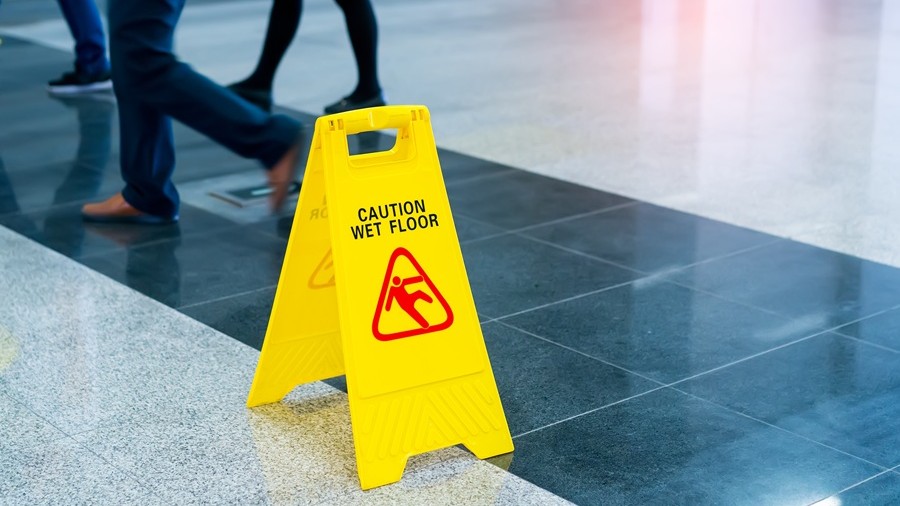BTO is here to guide you through any post-incident concerns but keep this quick reference guide close. While this should not be treated as a substitute for formal advice, it outlines the essential steps every employer should take to remain compliant, respond effectively, and maintain a safe workplace.
Step 1: Emergency Response
Where an incident occurs, the company’s emergency procedures should swing into action. Whilst many things will happen at once, it is of critical importance that the incident area is made safe to prevent any further harm to the individual or others who may attend at the incident to assist; where there are machines or chemicals involved that poses a live risk, it is imperative that they are safely isolated with immediate effect.
It is then important to confirm whether any individual involved in the incident requires any first aid or urgent medical intervention from paramedics and trained medical staff.
Step 2: Documenting and Investigating the Event
Once immediate risks and injuries are under the company’s control, it is important to investigate the accident to understand how it happened and why. Where an organisation has more than ten employees, they must maintain an accident book to keep a log of any workplace incident which should include facts about the accident and any injury sustained.
Beyond that, an investigation should start with establishing key facts, such as:
- Names of those involved in the incident;
- Names of any witnesses to the incident; and
- Working processes being followed at the time of the accident.
- Photographs of the location of the accident are also helpful.
Instructing a solicitor to set up an internal investigation team and guide the scope of the enquiries can help focus on important issues and potentially protect the report under Legal Privilege where possible.
Part 3: Do I make a RIDDOR Report?
Under Reporting of Injuries, Diseases and Dangerous Occurrences Regulations 2013, employers and those in charge of work premises must inform the Health and Safety Executive (HSE) about certain events.
The report should be submitted by the ‘responsible person’ with duties under RIDDOR. Reports should be factual and without opinion on cause or fault.
A RIDDOR report is required when:
a. The accident is work-related; and
b. It results in an injury of a type that is reportable.
BTO can assist with identifying whether an incident falls within the scope of RIDDOR.
Part 4: Timeframes and Record-Keeping
It is critical that the timescales set out in RIDDOR for report are met, for example, incidents involving fatalities and specified injuries require an immediate report (without undue delay).
If an employee is off work due to an occupational accident for more than three consecutive days (not including the accident), the accident must be logged, but it would become reportable under RIDDOR if the incapacitation lasts more than seven days.
All cases require a report to be submitted online through the HSE portal within 10 days as a maximum with the exception of reporting injuries to workers resulting in them being incapacitated over 7 days, for which 15 days is allowed.
Part 5: Informing Your Insurer
Employers’ liability and public liability policies usually demand prompt notification of any RIDDOR-reportable incident. It is important that your insurers are informed promptly to allow them to provide you with appropriate support.
BTO can assist with consideration of your policies to determine whether there might be cover for regulatory advice for support through any Police Scotland or HSE investigation.
Part 6: Enforcement by HSE
HSE investigations can be stressful and may result in enforcement action being taken to force improvement to working practices. The HSE can serve a variety of formal notices, but commonly use Prohibition Notices to stop work immediately or Improvement Notices to require a company to make changes within a set timeframe. These Notices are recorded publicly and non-compliance is a criminal offence.
We would urge you to seek immediate legal advice upon receipt of any enforcement action taken by the HSE. Notices can be appealed within a short window after being served and specialist legal advice is critical.
Part 7: Criminal Prosecution Process
After investigating, the HSE will conclude their investigation and advise the company of the outcome. The HSE can send a report recommending prosecution to the Crown Office and Procurator Fiscal Service (COPFS). As Scotland’s sole prosecution authority, COPFS decides whether to prosecute any individual or company for a breach of health and safety duties.
Part 8: Fatal Accident Inquiries
A Fatal Accident Inquiry (FAI) is mandatory for all deaths at work unless the circumstances are fully explored in another forum, usually a prosecution. An FAI is a fact-finding process which focuses on how and why the death occurred, aiming to prevent future tragedies rather than assigning blame.
Part 9: Preventing Incidents
While responding to incidents is vital, it is important that companies are proactive in preventing incidents from occurring.
- To minimise the likelihood of a workplace incident, organisations should:
- Update risk assessments and safe-work procedures regularly
- Train staff regularly on hazards within the workplace and emergency procedures
- Encourage reporting from staff of near-misses to spot trends early
A positive safety culture reduces incidents and ensures that staff feel appropriately informed.
How We Can Assist
For expert guidance on health and safety compliance, as well as responsive support in the aftermath of an incident, BTO Solicitors LLP’s top-ranked Health and Safety team is here to help.
Our specialists offer practical, proactive advice tailored to your organisation’s needs—before, during, and after any health and safety event. To help ensure ongoing compliance with ever-evolving legislation, we also offer comprehensive Compliance Audits tailored to your business.





